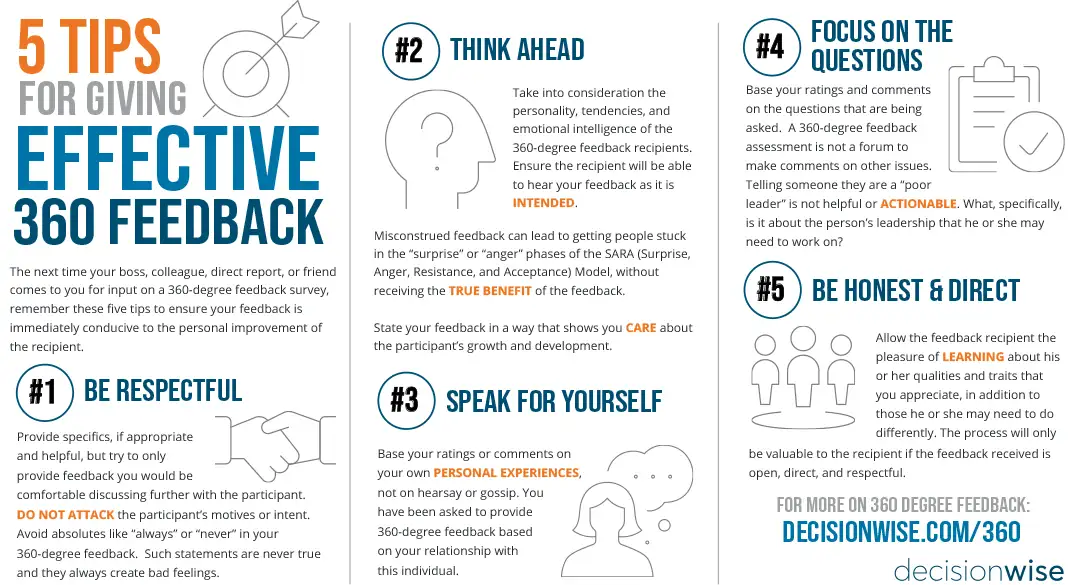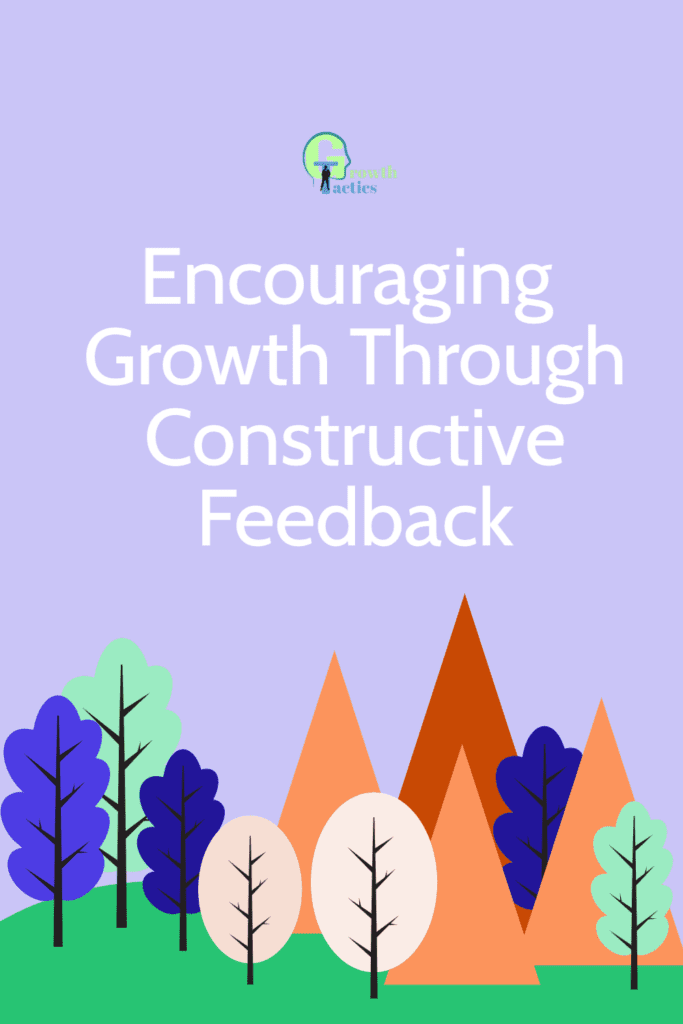Welcome to today’s blog post where we will be delving into the wonderful world of encouraging growth through constructive feedback. Imagine a world where everyone had the opportunity to grow and develop, not just in their personal lives but also in their professional endeavors. Well, my friend, that world can be achieved through the power of constructive feedback. In this guide, we will explore how you can encourage growth and unlock your full potential by giving and receiving constructive feedback.
Jump To Section
Understanding the Essence of Constructive Feedback
Before we dive into the nitty-gritty details, let’s establish what constructive feedback truly means. In essence, constructive feedback is all about providing guidance and support to aid growth and improvement. It is a way of delivering feedback that is focused on helping individuals develop their skills rather than demoralizing them.
It’s important to differentiate constructive feedback from criticism or negative comments. While criticism tends to focus on faults and shortcomings, constructive feedback aims to highlight areas of improvement while also acknowledging strengths.
So, why is constructive feedback so valuable? Well, it provides individuals with a roadmap for personal and professional development. It creates a safe space for growth and motivates individuals to strive for excellence.
Establishing a Conducive Environment to Give Feedback
Constructive feedback thrives in an environment built on trust, respect, and rapport. Without these essential elements, feedback exchanges can become detrimental, hindering growth rather than encouraging it.
One of the keys to creating this type of environment is by establishing open communication channels. Encourage regular feedback sessions where individuals can express their thoughts, concerns, and aspirations. This open dialogue fosters collaboration and creates a culture of continuous improvement.
To create a safe space for feedback, active listening, and empathy are crucial. When providing feedback, ensure that you are fully present and genuinely listening to the other person. Put yourself in their shoes and try to understand their perspective. This empathetic approach enhances the effectiveness of your feedback and shows that you genuinely care about their growth.
Embrace constructive feedback as the fuel that propels your growth. Unlock your full potential by turning criticism into opportunities for self-improvement. #UnlockYourPotential #ConstructiveFeedback #ChangeYourLife
Setting Clearer Goals and Expectations
Constructive feedback becomes much more impactful when it is aligned with clear goals and expectations. Having specific, measurable, achievable, relevant, and time-bound (SMART) goals serves as a blueprint for growth and development.
As a feedback provider, it is essential to guide individuals in setting these goals. By doing so, you create a foundation for effective feedback discussions. Additionally, clear goals allow individuals to have a sense of direction, enabling them to focus their efforts on areas that truly matter.
When aligning expectations, feedback plays a vital role. It helps individuals understand what is expected of them, identify areas of improvement, and receive guidance on how to achieve those expectations. Clear expectations provide a framework for growth, making it easier to identify actions that need to be taken.
Framing Feedback Effectively
Now that we understand the importance of constructive feedback and how to create a conducive environment, let’s explore some techniques for framing feedback effectively. By employing these strategies, you can ensure that your feedback is well-received and fosters growth.
First and foremost, remember to use “I” statements when expressing your observations or opinions. This allows you to take ownership of your feedback and avoids sounding judgmental. For example, instead of saying, “You always procrastinate,” you can rephrase it as “I have noticed that sometimes deadlines seem to be challenging for you.”
When providing feedback, it is crucial to offer specific examples of certain behaviors or actions. This provides clarity and helps the individual understand exactly what you are referring to. Rather than saying, “Your presentation was not engaging,” you can say, “During your presentation, incorporating more visuals and interactive elements could have made it more engaging for the audience.”
Avoid generalizing your feedback and instead focus on specific areas for improvement. By narrowing down the scope of your feedback, you make it more actionable and manageable for the individual. Be clear and concise.
Lastly, encourage a growth mindset when delivering feedback. Emphasize that improvement is always possible and that feedback is simply a tool to aid in that journey. By instilling a growth mindset, you empower individuals to embrace feedback as an opportunity for growth and development.
Giving Constructive Feedback that Motivates and Inspires
Constructive feedback is not only about pointing out areas for improvement. It is equally important to uplift and motivate individuals throughout the feedback process. To do this effectively, consider the following:
Start with positive reinforcement by acknowledging strengths and achievements. This sets a positive tone for the feedback conversation and boosts the individual’s confidence. Celebrate their progress and highlight what they are doing well.
When offering constructive criticism, focus on specific behaviors or actions rather than attacking the individual. Remember, it’s not about who they are, but what they do. This allows the individual to separate their self-worth from the feedback and makes it easier for them to accept and digest.
Be sure to suggest practical and actionable steps for improvement. Provide guidance and resources that can aid in their growth journey. Offering solutions shows that you are invested in their success and encourages them to take ownership of their development.
Lastly, encourage self-reflection and personal accountability. Help individuals understand the importance of taking an active role in their growth. Encourage them to identify areas they want to work on and set goals for themselves. This self-directed approach fosters a sense of ownership and motivation.
Supporting Growth through Ongoing Feedback
Constructive feedback should not be a one-time event but rather an ongoing process that supports long-term growth. To maintain forward momentum, consider the following:
Stress the importance of continuous feedback loops. Encourage individuals to regularly seek and provide feedback to stay on track toward their goals. Periodic check-ins enable them to assess progress, identify areas that need further attention, and make any necessary adjustments.
During these check-ins, evaluate progress and guide the next steps. Validate achievements and identify areas that still require development. It is crucial to maintain a balance between positive reinforcement and areas for improvement to keep individuals engaged and motivated.
Remember that growth is a journey, and constructive feedback is an essential companion throughout that journey.
Types of Feedback
Whether you’re an employee seeking personal growth or a manager striving to improve your team’s productivity, understanding and leveraging different types of feedback is essential. Below we’ll go over some of the different types of feedback.
Constructive Feedback
While positive feedback is crucial, constructive feedback is equally valuable. This type of feedback focuses on identifying areas for improvement and suggesting alternative approaches. Constructive feedback is not meant to criticize but rather to support growth and development. For example, if you receive feedback on a weak area, it’s an opportunity to learn and find ways to enhance your skills. Embrace constructive feedback as a stepping stone to improving your performance.
Performance Feedback
Performance feedback is all about evaluating your skills and abilities. It helps you measure your progress, understand your strengths, and identify any gaps that need attention. Performance feedback can be project-specific or related to routine tasks. It provides valuable insights into how you’re performing within your role and how you can enhance your overall performance.
Developmental Feedback
Think of developmental feedback as a long-term investment in your personal and professional growth. This type of feedback focuses on specific areas where you can develop and enhance your skills. Developmental feedback might highlight opportunities for improvement, suggest learning resources, or recommend training programs. Embracing developmental feedback demonstrates your willingness to grow and learn, setting you up for long-term success.
360-Degree Feedback
When it comes to feedback, the more perspectives, the better. 360-degree feedback gathers insights from various sources, including superiors, colleagues, and subordinates. This holistic approach provides a comprehensive view of your performance, highlighting both your strengths and areas for improvement. By seeking feedback from different angles, you gain a well-rounded understanding of your skills and behaviors.
Informal Feedback
Informal feedback often occurs in day-to-day interactions, without any formal structure. It can be as simple as a spontaneous “great job” or a constructive suggestion shared during a casual conversation. Informal feedback highlights the importance of communication and openness within a team. Being receptive to informal feedback demonstrates your willingness to take suggestions on board and continuously improve.
Formal Feedback
Formal feedback is typically given through performance reviews or evaluations. It involves structured meetings, documented assessments, and goal-setting discussions. Formal feedback provides a more focused evaluation of your performance, highlighting both strengths and areas for development. Embrace these formal feedback opportunities as chances to set goals, receive guidance, and chart your path to success.
Peer Feedback
Peer feedback plays a significant role in fostering collaboration, growth, and accountability within a team. It allows individuals to share their observations, suggestions, and insights with their colleagues in a structured manner. Peer feedback can be in the form of evaluations, feedback received during team projects, or constructive comments shared during collaborative discussions. Embracing peer feedback strengthens team dynamics and promotes overall improvement.
Self-Reflection as Feedback
Feedback doesn’t always have to come from others – it can also originate from within. Self-reflection is a powerful tool that allows you to evaluate your performance, strengths, and areas for improvement. Take time to introspect and assess your skills, actions, and behaviors. Engaging in self-reflection helps you develop self-awareness and chart a path for personal growth. Embrace self-reflection as a valuable feedback mechanism.
Turning Negative Feedback into Positive Opportunities
Understand and Prioritize Active Listening
Active listening is a fundamental skill that can greatly enhance your ability to avoid negative feedback. It involves genuinely hearing and understanding others’ opinions and feedback before responding. To actively listen, maintain eye contact, ask open-ended questions, and summarize or paraphrase to ensure you comprehend the message being conveyed. By doing so, you signal to the speaker that their thoughts and opinions are valuable, which can help foster a more constructive and respectful dialogue.
Embrace Constructive Criticism
It’s important to distinguish between negative feedback and constructive criticism. Negative feedback tends to focus solely on faults and shortcomings, often providing no actionable solutions for improvement. On the other hand, constructive criticism offers specific suggestions and ideas for growth. Embrace constructive criticism with an open mindset, recognizing its potential to help you become better in what you do. Remember, it is not a personal attack, but rather an invitation to evolve and excel.
Handling constructive criticism gracefully is crucial. Rather than becoming defensive or taking it personally, approach it as an opportunity for growth. Consider the credibility and qualifications of those providing feedback and extract actionable suggestions from it. By adopting a growth mindset, you can view constructive criticism as a stepping stone towards personal and professional development.
Cultivate a Positive Professional Network
A supportive network can be your guiding light when it comes to feedback. By cultivating positive relationships with colleagues, mentors, and industry experts, you create a circle of trust and accountability. Actively participate in industry events, networking opportunities, and social gatherings to expand your network. Nurturing genuine relationships within this network will not only provide you with valuable feedback but also foster a supportive environment where constructive criticism is embraced and growth is celebrated.
Regular Self-Assessment and Continuous Learning
Engaging in regular self-assessment is a crucial aspect of avoiding negative feedback. Reflect on your strengths and weaknesses, and identify areas where you can improve. Set clear and actionable goals for personal and professional growth. This proactive approach places you in the driver’s seat, allowing you to identify and address potential issues before they escalate.
Furthermore, never stop learning. Stay updated in your field by immersing yourself in relevant resources, attending seminars, and participating in workshops. The more knowledge and skills you acquire, the more confident you become in your abilities, reducing the likelihood of negative feedback stemming from a lack of expertise.
Despite our best efforts, negative feedback may still find its way to us. When faced with criticism, it’s essential to respond effectively to prevent further damage to your reputation.
First and foremost, take some time to process the feedback before responding. Rushing into a defensive or confrontational reaction rarely ends well. Allow yourself to absorb the criticism, objectively evaluate its validity, and formulate a thoughtful response.
Show gratitude for the feedback and acknowledge its value. By expressing appreciation, you demonstrate professionalism and a genuine desire to learn from the experience. Remember, negative feedback can be an opportunity for growth, and by embracing it, you are demonstrating emotional maturity and resilience.
If the criticism seems vague or lacks specifics, don’t hesitate to ask for specific examples or suggestions for improvement. This shows that you are genuinely interested in understanding and actively working towards overcoming the identified weaknesses.
Conclusion
Constructive feedback has the power to unlock your full potential and propel you towards growth and development. By creating a safe environment, setting clear goals, framing feedback effectively, and providing motivation and support, you can encourage growth in both yourself and those around you.
Embrace the opportunity to give and receive constructive feedback, and watch as you unlock your true potential. Remember, growth is a continuous process, and with the right feedback, you will soar to new heights.



